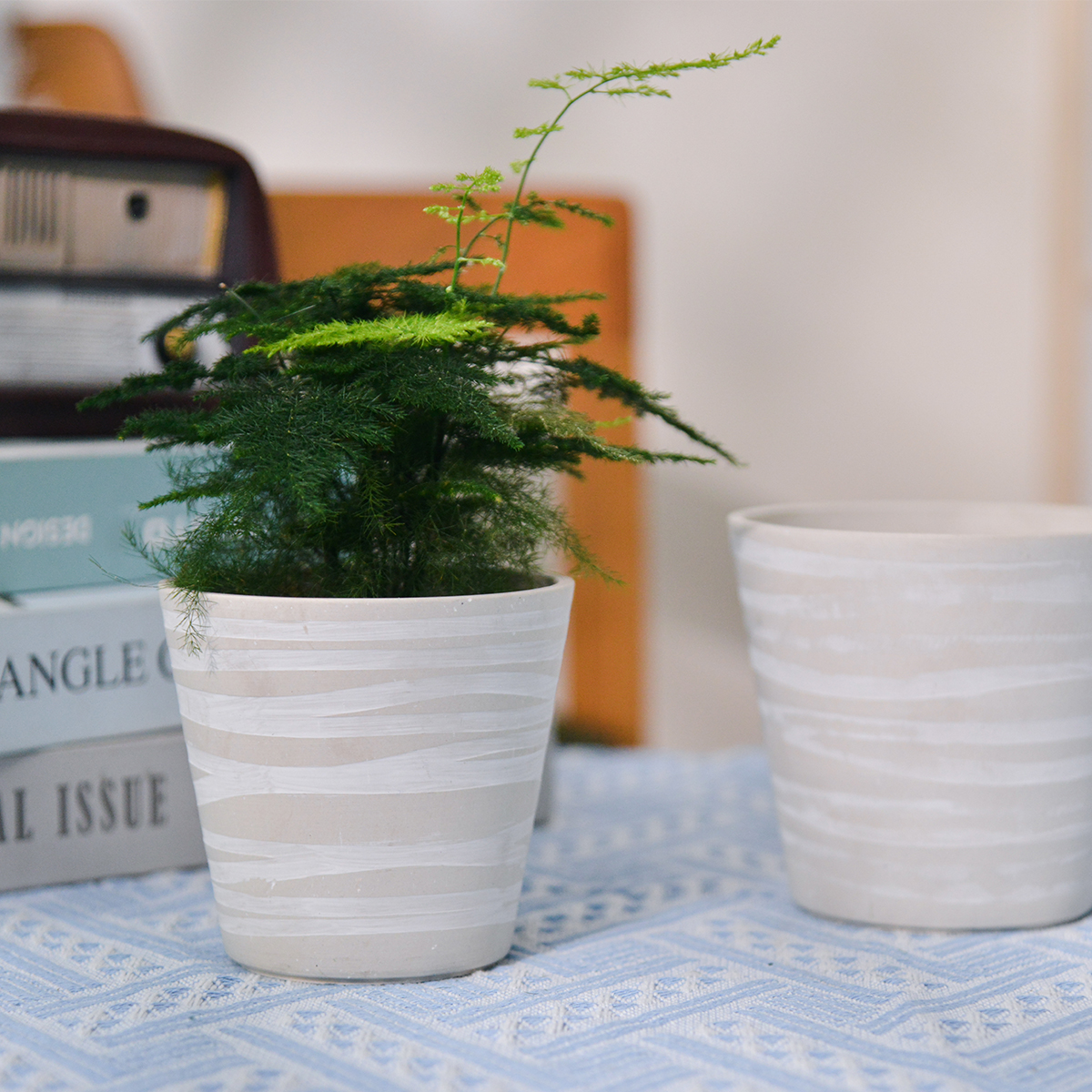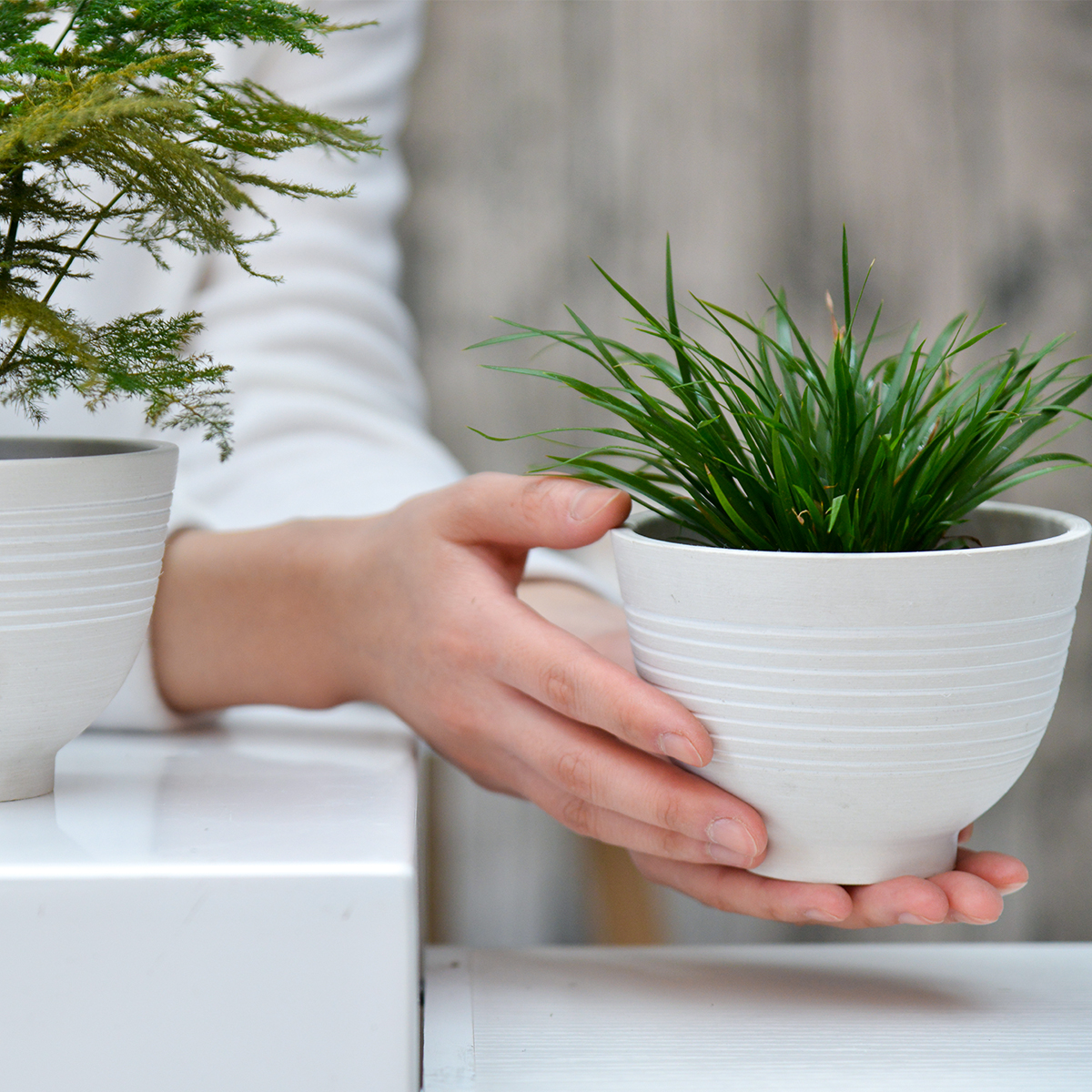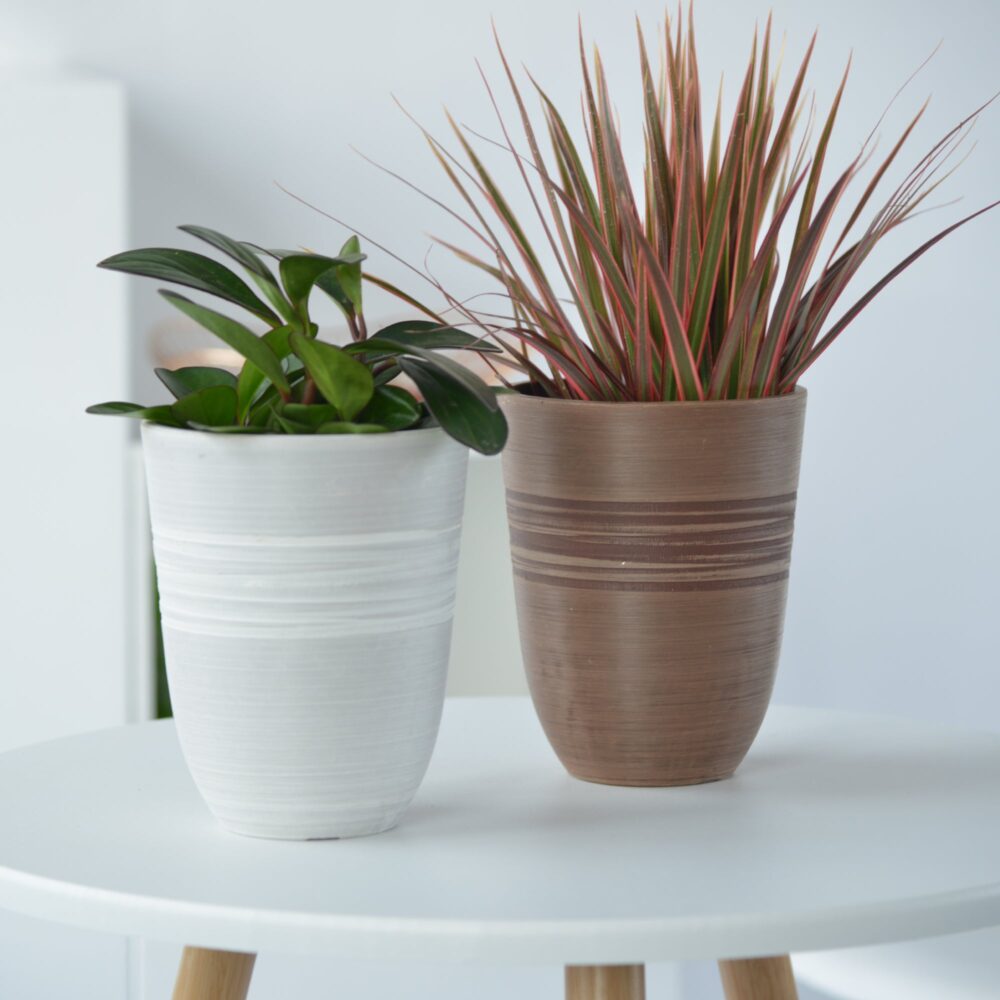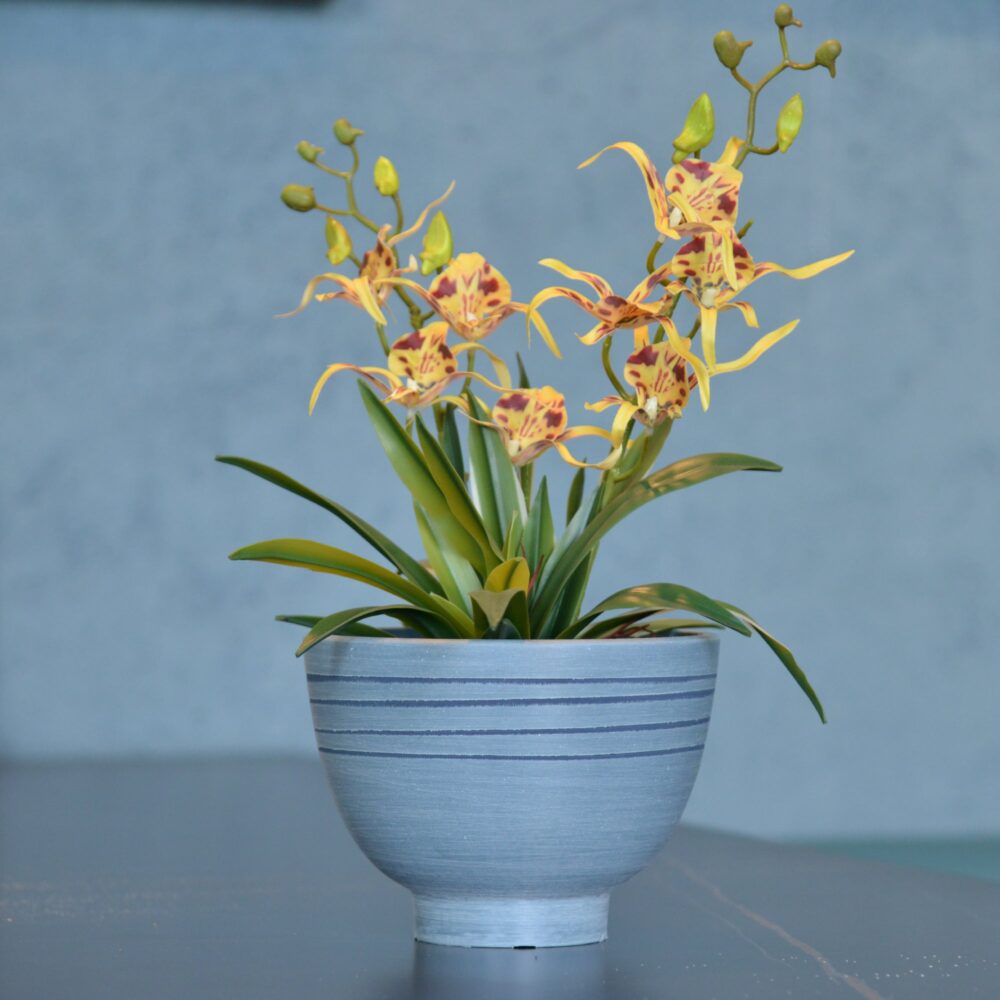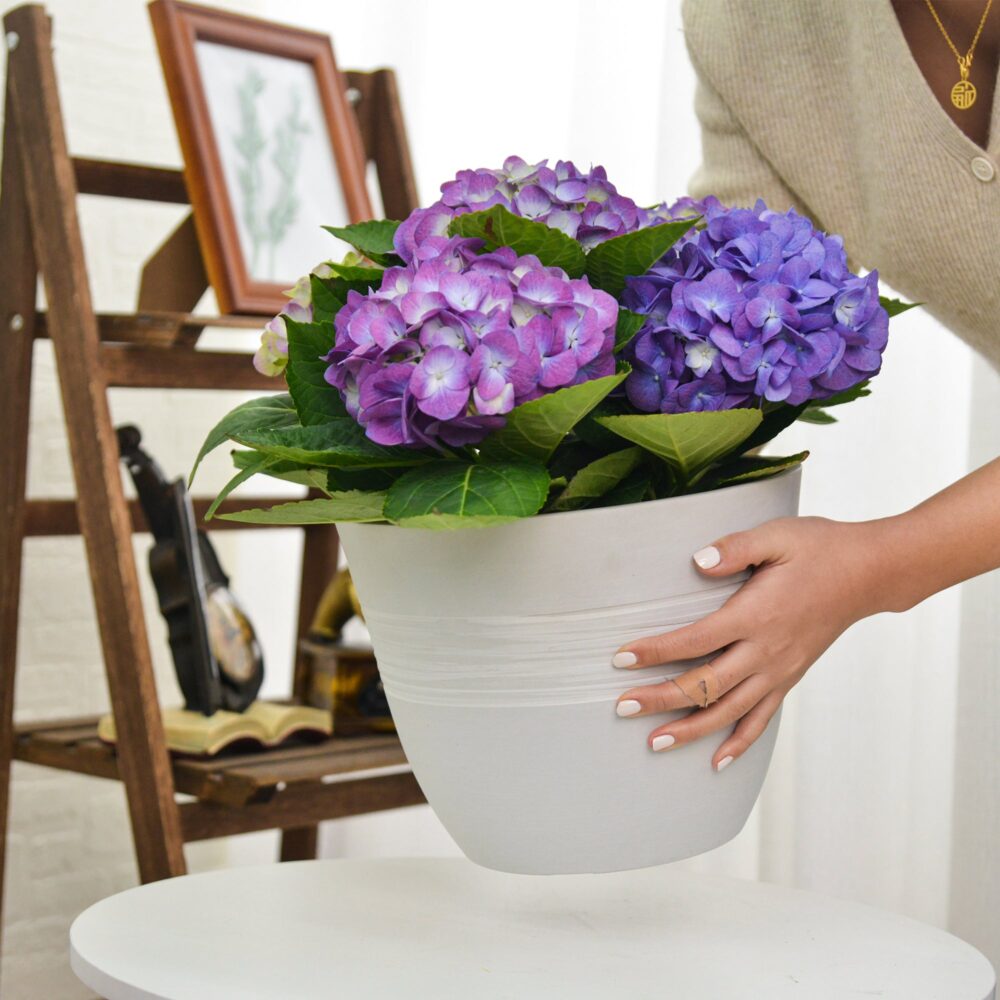Chinese Crabapple in Pots: The Ultimate Guide to Growing Malus Outdoors in Containers (Fragrant Spring Blooms & Colorful Fall Fruit!)
Want to enjoy the beauty of Chinese Crabapple (Malus spectabilis) and its stunning spring blossoms and colorful fall fruit, even in a limited space? Growing these ornamental trees in containers is a wonderfully rewarding way to bring their seasonal charm and graceful presence to your patio, balcony, or garden. Celebrated for their profusion of fragrant pink or white flowers in spring, their attractive foliage, their colorful crabapples in fall, their relatively compact size (especially suitable cultivars), and their adaptability to container gardening, Chinese Crabapples are perfect for adding a touch of seasonal beauty and year-round interest to your outdoor living areas. This comprehensive guide will provide you with everything you need to know to grow Malus spectabilis successfully in outdoor pots, from selecting the best varieties and containers to mastering essential care techniques for a spectacular and long-lasting display.
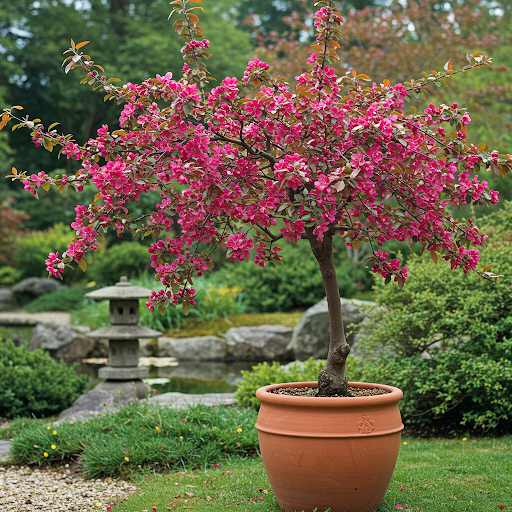
Chinese Crabapple
What is Chinese Crabapple?
Chinese Crabapple, scientifically known as Malus spectabilis, is a deciduous ornamental tree belonging to the Rosaceae family (Rose family), the same family as apples, pears, and cherries. Native to China, it is widely cultivated as an ornamental tree around the world, especially in temperate regions, prized for its spectacular spring blossoms, attractive foliage, colorful fall fruit, and graceful form. Malus spectabilis is characterized by its spreading, rounded crown, its branching habit, its simple, ovate, serrated leaves that are typically green but can have bronze or reddish tints in some cultivars, and its profuse and showy flowers that are its defining feature in spring. The flowers are borne in clusters (corymbs), typically 1-2 inches in diameter, fragrant, and range in color from deep pink in bud, opening to lighter pink or white. Flowering is usually abundant and creates a stunning floral display in mid to late spring. Following the flowers, small crabapples develop, which are typically yellow or red when ripe in the fall, adding autumn and winter interest. The tree itself is relatively small to medium-sized, typically reaching heights of 15-25 feet (4.5-7.5 meters), making it well-suited for home gardens and container culture, especially with the selection of appropriate cultivars. Chinese Crabapple is known for its spectacular spring floral display, its attractive fall fruit, its graceful form, its moderate size, its adaptability to urban conditions, and its ability to bring multi-seasonal beauty and ornamental value to any landscape.
Is Chinese Crabapple Good for Outdoor Pots?
Yes, Chinese Crabapple is very well-suited for outdoor pots and container gardening, and is an increasingly popular choice for patios, balconies, terraces, and smaller gardens. Container growing is an excellent way to manage its size, enjoy its seasonal beauty up close, and move it to optimal locations as needed. Its adaptability to container culture, availability of dwarf and semi-dwarf cultivars, spectacular spring flowers and fall fruit, attractive foliage, and relative ease of care make it ideal for container cultivation. Growing Chinese Crabapple in pots offers several advantages:
- Ideal for Patios and Balconies: Container gardening allows you to enjoy Chinese Crabapples even if you have limited garden space, such as on balconies, patios, or decks. They bring vertical interest and seasonal beauty to paved areas.
- Portability: Potted Chinese Crabapple trees can be easily moved to optimal locations for sunlight, display, or shelter from extreme weather. You can rearrange them to create stunning focal points or seasonal displays. Bring them indoors to protect from harsh winter winds or late spring frosts that can damage blossoms.
- Controlled Soil Conditions: Container gardening allows you to provide the specific well-draining, slightly acidic soil mix that Chinese Crabapples prefer and control watering and fertilization more precisely, which is important for their health and flowering and fruiting.
- Design Versatility: Chinese Crabapples in pots can be used as standalone specimen trees in decorative pots, placed in pairs flanking doorways or entrances, grouped together to create a small potted orchard effect, or used to create a focal point in a container garden arrangement. Their upright form and seasonal beauty add a touch of elegance and dynamic interest to container gardens.
- Size Control: Container growing naturally restricts the size of Chinese Crabapples, making them more manageable for smaller gardens and preventing them from becoming too large, which can be beneficial as they can be vigorous growers in the ground. Choosing dwarf or semi-dwarf cultivars further enhances size control in containers.
- Pest and Disease Management: Container growing can help reduce some soilborne pest and disease issues that can affect Chinese Crabapples planted directly in the ground.
- Highlighting Seasonal Beauty: Container growing allows you to bring the spectacular spring blossoms and colorful fall fruit up close for easy observation and enjoyment of their seasonal transformations.
Ideal Growing Conditions for Chinese Crabapple in Pots:
Types of Chinese Crabapple for Pots (Cultivars and Rootstocks): When growing Chinese Crabapples in containers, selecting appropriate cultivars and rootstocks is crucial for managing size and ensuring success:
- Dwarf and Semi-Dwarf Cultivars: Choose cultivars specifically labeled as “dwarf” or “semi-dwarf.” These varieties are naturally smaller and more compact, better suited for container growing. Examples include: ‘Adirondack’ (upright, columnar, disease-resistant), ‘Louisa’ (weeping form, pink flowers), ‘Prairie Fire’ (purple foliage, pink flowers, disease-resistant), ‘Royal Raindrops’ (purple foliage, pink flowers, cutleaf foliage, disease-resistant), ‘Sugar Tyme’ (white flowers, small fruit, disease-resistant).
- Grafted on Dwarfing Rootstock: Ensure that the chosen cultivar is grafted onto a dwarfing or semi-dwarfing rootstock. Rootstock information is often provided when purchasing grafted trees. Dwarfing rootstocks significantly reduce the mature size of the tree, making them more manageable in containers. Common dwarfing rootstocks for crabapples include Budagovsky 9 (Bud 9), M9, or M26.
- Consider Flower Color and Fruit Color: Chinese Crabapples come in various flower colors (pink, white, shades in between) and fruit colors (red, yellow, orange). Choose cultivars based on your preferred flower and fruit colors and overall aesthetic.
- Disease Resistance: Select disease-resistant cultivars, especially those resistant to apple scab, fireblight, and cedar-apple rust, as these are common diseases of crabapples. Disease resistance is particularly important for container-grown plants, as they may be more susceptible to stress.
Light: Chinese Crabapples thrive in full sun. They need at least 6-8 hours of direct sunlight per day, and ideally more, to bloom and fruit profusely and develop their best fall color. When grown in pots outdoors, position them in the sunniest location possible in your garden or patio. They will tolerate very light afternoon shade, but full sun is best for optimal flowering, fruiting, and overall tree health. Insufficient sunlight will result in reduced flowering and fruiting, and less vibrant fall color.
Soil: Chinese Crabapples prefer well-draining, fertile soil that is slightly acidic to neutral. Use a high-quality general-purpose potting mix amended to improve drainage and fertility for trees and shrubs. Amend potting mix with compost, well-rotted manure, and perlite or vermiculite to improve fertility, drainage, and aeration. Good drainage is essential to prevent root rot, especially in containers. Chinese Crabapples are adaptable to a range of soil types but thrive in well-drained, fertile conditions. A slightly acidic to neutral pH (around 6.0-7.0) is ideal.
Watering: Chinese Crabapples prefer consistently moist soil, especially when young and when establishing in containers, and during bloom and fruit development, but they don’t want to be waterlogged. Water thoroughly when the top inch or two of soil feels slightly dry. Water deeply until water drains out of the drainage holes. Then, allow the topsoil to slightly dry before watering again. Avoid overwatering and consistently soggy soil, which can lead to root rot. Also, avoid letting the soil dry out completely, especially during hot, dry periods, as drought stress can weaken the tree and affect flowering and fruiting. Chinese Crabapples prefer a “moist but not soggy” soil environment. Watering frequency will depend on weather conditions, pot size, and the tree’s growth stage. Water more frequently during warmer, drier periods and less frequently during cooler, cloudier periods and in the dormant season (winter). Reduce watering in winter after leaf drop, but don’t let the soil dry out completely, especially for young trees in containers.
Temperature: Chinese Crabapples are cold-hardy deciduous trees and are adapted to a wide range of temperatures. They are hardy in USDA zones 4-8 or even 9, depending on the cultivar. They need a period of winter chill to bloom properly in spring. In Singapore’s consistently warm climate, Chinese Crabapples may not thrive long-term as they require a colder winter dormancy period to flower reliably. They are best suited for regions with distinct seasons, including a cool winter. If attempting to grow in warmer climates, choose lower-chill cultivars if available and provide some afternoon shade in the hottest periods.
Humidity: Chinese Crabapples are adaptable to a range of humidity levels and tolerate both moderate and high humidity. Singapore’s humidity is generally tolerated by Chinese Crabapples, but good air circulation is beneficial, especially to prevent fungal diseases in humid climates.
Fertilizer: Chinese Crabapples are moderate feeders and benefit from regular fertilization, especially when young and when grown in containers, to support their growth, flowering, and fruiting. Fertilize in early spring just as new growth begins, and again lightly in late spring or early summer after flowering. Use a balanced slow-release fertilizer formulated for trees and shrubs (e.g., 10-10-10 or similar NPK ratio). Follow product label instructions for application rates, and adjust based on pot size and tree age. Avoid over-fertilizing, especially with high-nitrogen fertilizers, which can promote excessive leafy growth at the expense of flowering and fruiting, and can make trees more susceptible to diseases. You can also amend the potting mix with compost or well-rotted manure annually in spring to improve soil fertility. Reduce or stop fertilizing in late summer or fall as the tree prepares for dormancy.
Choosing the Right Pots for Chinese Crabapple:
Suitable Pot Types: Chinese Crabapples need large, sturdy pots that provide good drainage, stability, and room for root development. Suitable pot types include:
- Large Terracotta Pots: Very large terracotta pots are a good choice for smaller dwarf crabapple cultivars, providing excellent drainage and aeration, and good stability due to their weight. However, terracotta can be very heavy and may dry out quickly in warm weather, requiring more frequent watering.
- Large Ceramic Pots (Glazed or Unglazed): Very large glazed or unglazed ceramic pots can be used, offering a wide range of decorative styles. Ensure they have drainage holes and are very large and sturdy enough for a small tree. Unglazed ceramic is more breathable like terracotta. Choose based on your desired aesthetic and pot size needs.
- Large Resin Pots (Durable and Lighter Weight): Very large, durable resin pots are often the most practical option for container-grown trees, as they are lighter than concrete or large terracotta, but can still be made very large and robust, and are durable for outdoor use. Choose UV-resistant, high-quality resin pots designed for trees or large shrubs.
- Wooden Planters (Large and Rustic): Large wooden planters or half-barrels can provide a rustic and natural look for container-grown crabapples. Ensure they are well-constructed and have drainage holes, and consider lining them with plastic to prolong their lifespan and help retain moisture.
Drainage: Excellent drainage is essential for Chinese Crabapples to prevent root rot. Ensure your chosen pot has drainage holes at the bottom. Avoid pots without drainage holes. Always use a drainage layer at the base of the pot (e.g., a layer of gravel or pot shards) beneath the potting mix to further enhance drainage, especially in larger pots. Elevating pots slightly on pot feet or bricks can also improve drainage and air circulation.
Pot Size: Choose pot sizes appropriate for the mature size of the specific dwarf or semi-dwarf Chinese Crabapple cultivar you are growing and your desired display. Trees in containers will generally remain smaller than in the ground, but still need adequate root space.
- Young Dwarf Crabapple Trees: Start with pots that are at least 18-24 inches in diameter and depth.
- Semi-Dwarf or More Mature Dwarf Trees: Use pots that are 24-30 inches in diameter and depth or larger.
- Larger, More Mature Specimens: For very mature, larger dwarf or semi-dwarf specimens, you might need pots that are 30 inches or more in diameter and depth.
- Depth: Pots should be at least 18-24 inches deep, and ideally 24-30 inches deep or more for larger varieties, to accommodate the root system and provide good soil volume for tree growth.
Stability: For container-grown trees, stability is crucial, especially as they grow taller and become top-heavy, and in windy locations. Use very large, heavy pots made of terracotta, ceramic, concrete, or sturdy, thick resin. Wider pots are generally more stable than tall, narrow pots. Position pots in a sheltered location if possible to minimize wind exposure. You may need to stake or guy-wire taller trees in containers, especially when young and before the root system is fully established.
Color and Style: Choose pot colors and styles that complement the flower and fruit colors and overall form of your Chinese Crabapple and your outdoor décor, and enhance their seasonal beauty. Classic terracotta, earthy tones, elegant gray or stone-look pots, or even brightly colored glazed pots can create a sophisticated and inviting look, highlighting the seasonal changes in the tree. Consider the overall style of your patio or balcony and choose pots that harmonize with the surroundings and enhance the desired elegant, seasonal garden ambiance.
Essential Care Tips for Thriving Chinese Crabapple in Outdoor Pots:
- Watering: “Water Thoroughly When Top Inch or Two of Soil is Slightly Dry, Avoid Overwatering”. Water deeply when top inch or two of soil is slightly dry during growing season. Ensure excellent drainage. Allow topsoil to slightly dry between waterings. Avoid overwatering and soggy soil. Water more frequently in hot, dry weather.
- Sunlight: Provide Full Sun (at least 6-8 Hours Daily for Best Bloom and Fruit). Full sun is essential for abundant flowering, fruiting, and fall color.
- Fertilizing: Fertilize in Early Spring and Lightly in Late Spring/Early Summer with Balanced Slow-Release Tree Fertilizer. Fertilize in early spring and lightly again after flowering to promote healthy growth, flowering, and fruiting. Use balanced slow-release tree and shrub fertilizer. Avoid over-fertilizing.
- Pruning (Light Pruning in Late Winter/Early Spring): Chinese Crabapples benefit from light pruning in late winter or early spring before new growth begins. Prune to shape the tree, remove dead, damaged, or crossing branches, and improve air circulation. Minimal pruning is usually needed for dwarf cultivars.
- Deadheading (Optional, for Appearance): Deadheading spent flowers (removing faded blossoms) is generally not practical or necessary for crabapples. They are grown for their overall floral display, not individual blooms.
- Pest and Disease Control (Monitor for Common Crabapple Pests and Diseases): Monitor for common crabapple pests and diseases such as aphids, spider mites, Japanese beetles, apple scab, fireblight, and cedar-apple rust. Choose disease-resistant cultivars to minimize problems. Provide good air circulation. Treat with appropriate insecticides or fungicides if necessary, following product instructions.
- Winter Care (Cold Hardy, Minimal Winter Care in Most Regions): Chinese Crabapples are cold-hardy deciduous trees. Potted Chinese Crabapples in colder climates (USDA zones 4-6 or colder) may benefit from some winter protection for the roots in very exposed locations. Insulate the pot with bubble wrap or burlap, or move pots to a sheltered location (unheated garage or against a building foundation) to protect roots from extreme freezing temperatures and harsh winter winds. In milder climates (zones 7-9), minimal winter care is needed. Reduce watering significantly in winter dormancy.
Popular Chinese Crabapple Cultivars for Pots (and Key Features):
Choosing the right cultivar is essential for container success.
- Dwarf and Compact Cultivars (Ideal for Pots): ‘Adirondack’ (columnar, pink flowers, red fruit, disease-resistant), ‘Louisa’ (weeping, pink flowers, yellow fruit), ‘Prairie Fire’ (purple foliage, pink flowers, red fruit, disease-resistant), ‘Royal Raindrops’ (purple cutleaf foliage, pink flowers, red fruit, disease-resistant), ‘Sugar Tyme’ (white flowers, small red fruit, disease-resistant, upright).
- Disease-Resistant Cultivars (Important for Container Growing): ‘Adirondack’, ‘Prairie Fire’, ‘Royal Raindrops’, ‘Sugar Tyme’, ‘Donald Wyman’, ‘Indian Magic’, ‘Jewelberry’.
- Pink Flowering Cultivars (Various Pink Shades): ‘Adirondack’, ‘Louisa’, ‘Prairie Fire’, ‘Royal Raindrops’, ‘Radiant’, ‘Coralburst’, ‘Pink Perfection’.
- White Flowering Cultivars (Classic White Blooms): ‘Sugar Tyme’, ‘Donald Wyman’, ‘Snowdrift’, ‘Spring Snow’.
- Red or Yellow Fruited Cultivars (Fall and Winter Interest): ‘Adirondack’ (red), ‘Prairie Fire’ (red), ‘Royal Raindrops’ (red), ‘Sugar Tyme’ (red), ‘Louisa’ (yellow), ‘Golden Raindrops’ (yellow).
In Summary:
Growing Chinese Crabapple (Malus spectabilis) in outdoor pots is a wonderfully rewarding way to bring the beauty of these classic flowering trees to smaller gardens, patios, and balconies. Their spectacular spring blossoms, attractive foliage, colorful fall fruit, and adaptability to containers make them a perfect choice for container gardeners of all levels, especially those seeking multi-seasonal beauty and a touch of elegance in their outdoor spaces. By providing full sun, well-draining, slightly acidic potting mix in large pots with good drainage, regular watering and fertilization during the growing season, choosing appropriate dwarf or semi-dwarf cultivars, and providing basic pruning and care, you can easily cultivate thriving and spectacularly beautiful Chinese Crabapple trees in pots and enjoy their seasonal transformations and year-round ornamental value in your outdoor living areas for many years to come.
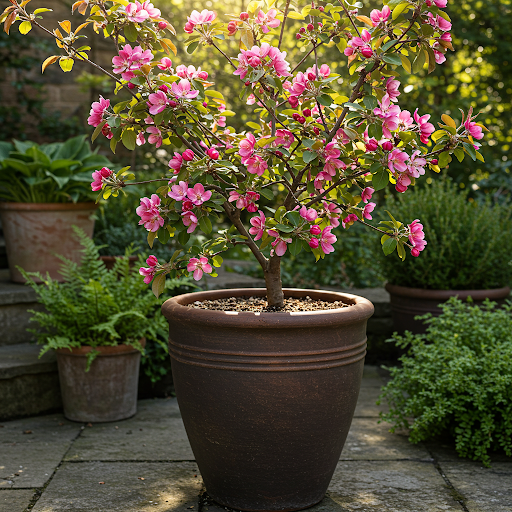
Chinese Crabapple
For more detailed botanical information and to explore the diverse world of Chinese Crabapples, you can visit the Wikipedia page on Malus spectabilis.
Important Note: While Chinese Crabapples are beautiful and rewarding, remember that in Singapore’s tropical climate, they may not thrive as reliably as in temperate regions with distinct seasons and winter chill. Consider this climatic limitation when deciding if Chinese Crabapple is the best choice for your outdoor container garden in Singapore.**
20T
By greenship|2024-08-13T06:42:22+00:00August 13, 2024|Categories: Hand-carving Series|
KC3-14A
By greenship|2024-08-16T06:26:30+00:00August 16, 2024|Categories: Hand-carving Series|
Plant Pots 6 inch 8 inch 10 inch for Indoor Plants, Set of 3 Modern Decorative Planter ts with Drainage Hole, Decorative Flower Pots
By greenship-seo|2025-04-10T06:39:28+00:00January 14, 2025|Categories: Hand-carving Series|Tags: Decorative Flower Pots|
Planter 6 in W / 8 in W / 12 in W Indoor or Outdoor Plants, Modern Decorative Plant Pots with Drainage Hole, Decorative Flower Pots
By greenship-seo|2025-02-06T13:43:53+00:00January 16, 2025|Categories: Hand-carving Series|Tags: Decorative Flower Pots|
8 inch/10 inch Planter Indoor Plants, 2 Pack Modern Decorative Plant Pots with Drainage Hole, Cute Bowl Shape Flower Pots
By greenship-seo|2025-04-10T08:03:42+00:00January 9, 2025|Categories: Hand-carving Series|Tags: Decorative Flower Pots, Self-Watering Pots|
Planter for Indoor Outdoor Plants, Set of 2 Modern Decorative Plant Pots with Drainage Hole, Decorative Flower Pots
By greenship-seo|2025-01-14T12:26:44+00:00January 14, 2025|Categories: Hand-carving Series|Tags: Decorative Flower Pots|

